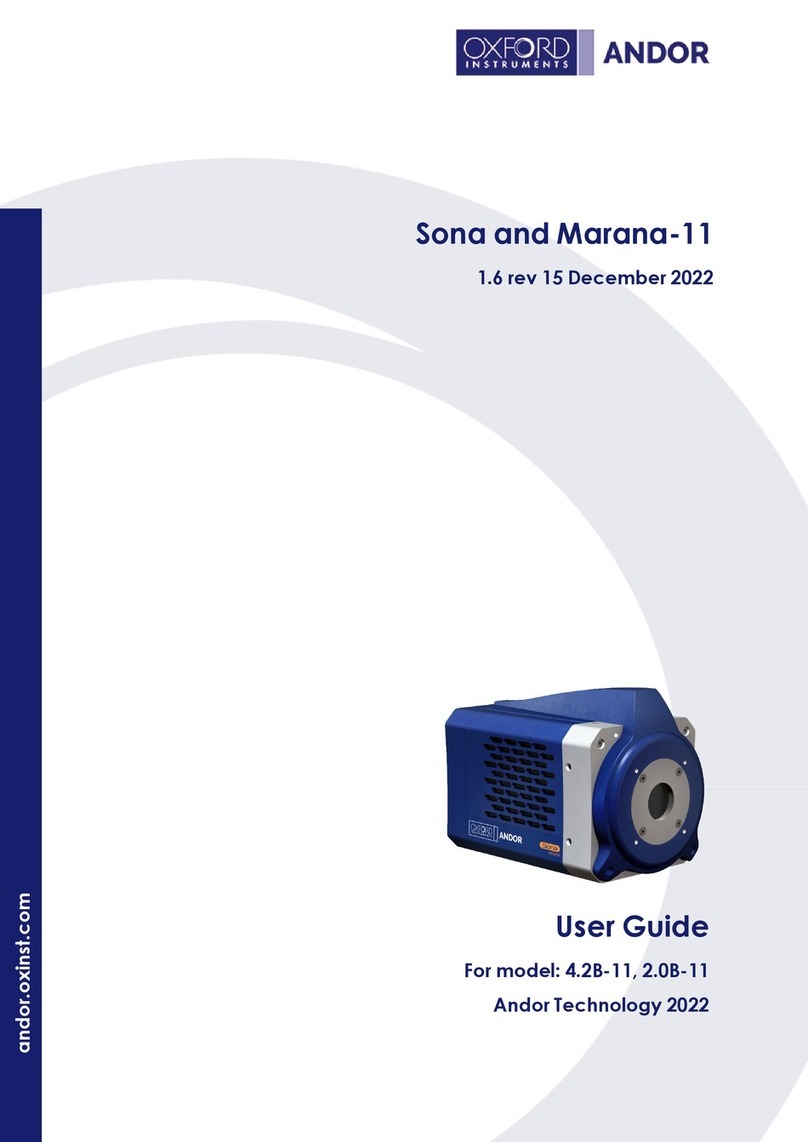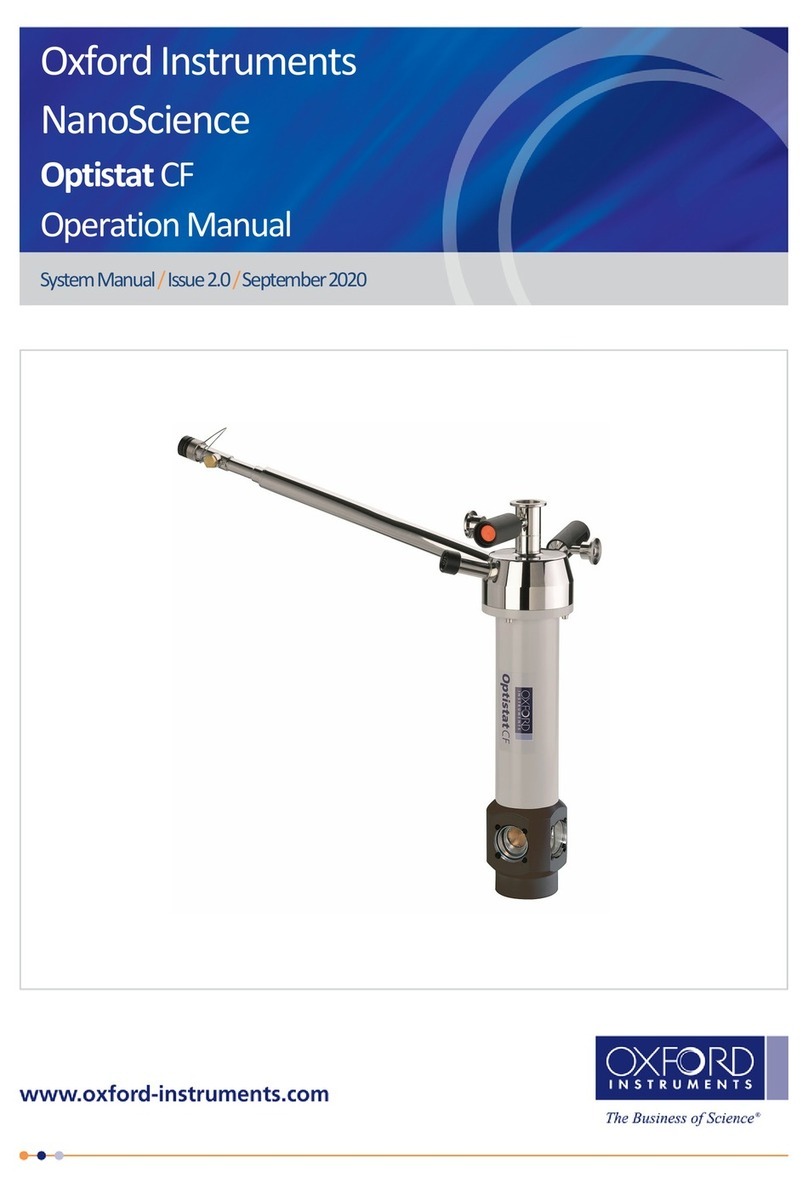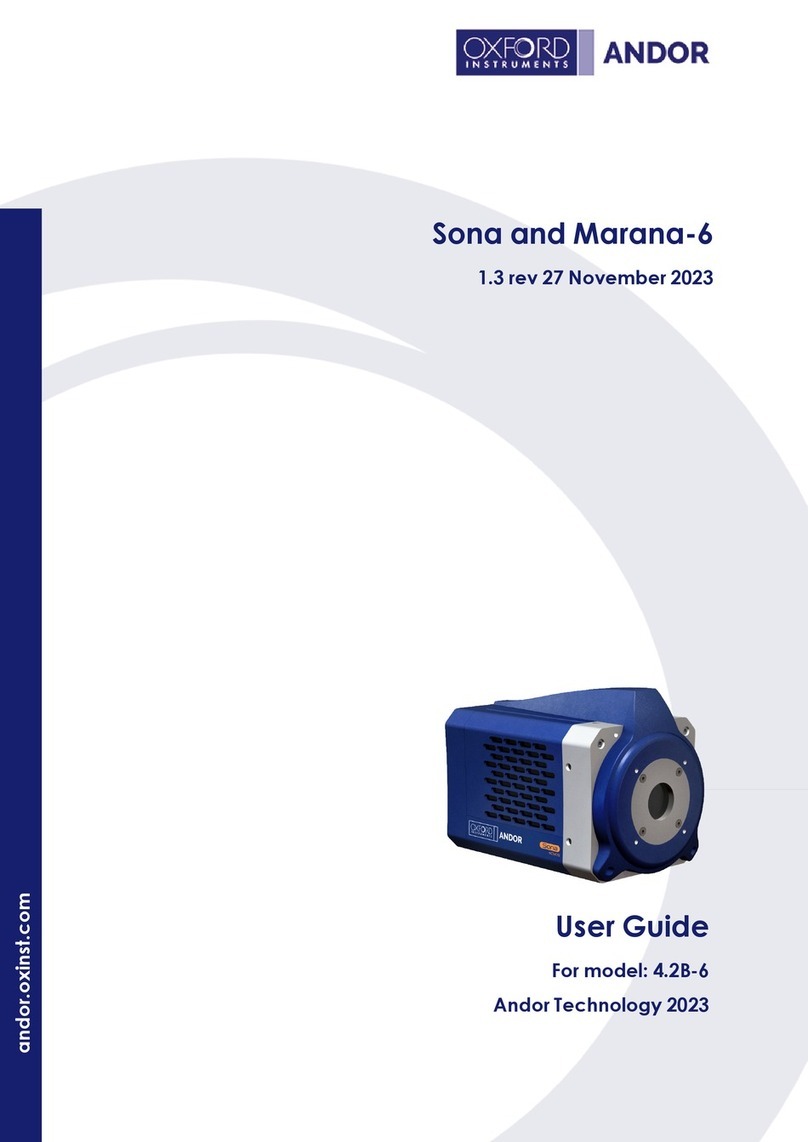
Microstat N Safety and Support Information
IMPORTANT INFORMATION
Product description
The Microstat N is a continuous flow nitrogen cryostat, designed
principally to allow low temperature samples to be studied with an
optical microscope. The sample is mounted in vacuum on a heat
exchanger, with optical access available through up to two windows.
The sample temperature is held at temperatures betweeen 77K and
500K using the MercuryiTC temperature controller. Refer to the user
manual for more details. The user manual can be downloaded from
the website support.myoxinst.com.
Statement of intended use
The equipment has been designed to operate within the process pa-
rameter limits that are outlined in the user manual. The equipment
is intended to be installed, used and operated only for the purpose
for which the equipment was designed, and only in accordance with
the instructions given in the manual and other accompanying doc-
uments. Nothing stated in the manual reduces the responsibility
of users to exercise sound judgement and best practice. It is the
user’s responsibility to ensure the system is operated in a safe man-
ner. Consideration must be made for all aspects of the system’s
life-cycle including, handling, installation, normal operation, mainte-
nance, dismantling, decontamination and disposal. It is the user’s
responsibility to complete suitable risk assessments to determine
the magnitude of hazards.
The installation, use and operation of the equipment are subject to
laws in the jurisdictions in which the equipment is installed and in
use. Users must install, use and operate the equipment only in such
ways that do not conflict with said applicable laws and regulations. If
the equipment is not installed, used, maintained, refurbished, mod-
ified and upgraded as specified by the manufacturer, then the pro-
tection it provides could be impaired. Any resultant non-compliance
damage, or personal injury would be the fault of the owner or user.
Use of the equipment for purposes other than those intended and
expressly stated by Oxford Instruments NanoScience, as well as
incorrect use or operation of the equipment, may relieve Oxford In-
struments NanoScience or its agent of the responsibility for any re-
sultant non-compliance damage or injury. The system must only be
used with all external covers fitted.
Restrictions on use
The equipment is not suitable for use in explosive, flammable or haz-
ardous environments. The equipment does not provide protection
against the ingress of water. The equipment must be positioned so
that it will not be exposed to water contact. Ensure that pressure
relief devices are not obstructed.
Maintenance and adjustment
Only qualified and authorised persons should service or repair this
equipment. Under no circumstances should the user attempt to re-
pair this equipment while the electrical power supply is connected.
Health and safety information
The equipment operates at hazardous temperatures. Before work-
ing with the equipment, all personnel must read and become thor-
oughly familiar with the safety information given in the user manual.
In particular, users must read, understand and strictly observe all :
Warning notices; Caution notices; Safety labels and markings on the
equipment. For ease of reference and rapid response in an emer-
gency, it is advised that a copy of the user manual should be safely
kept near the equipment when in operation.
Before you attempt to install or operate this equipment for the
first time, please make sure that you are aware of the precau-
tions that you must take to ensure your own safety.
LOW TEMPERATURE EQUIPMENT: Danger of death or serious
injury. Contact with cold objects and cryogens can cause serious
injury. Use personal protective equipment including hand and eye
protection. Cryogens can displace the oxygen from air and cause
death by asphyxiation. Ensure that adequate ventilation is provided.
ÉQUIPEMENT A BASSE TEMPÉRATURE: Danger de mort ou de
blessure grave. Le contact avec des objets froids et des cryogènes
peut causer des blessures graves. Utilisez un équipement de pro-
tection individuelle, y compris la protection des mains et des yeux.
Les cryogènes peuvent déplacer l’oxygène de l’air et provoquer la
mort par asphyxie. Assurez-vous qu’une ventilation adéquate est
fournie.
© 2017 Oxford Instruments Nanoscience PSS-MN-5.0.0 (28ff3d8) Nov 2017 1
































